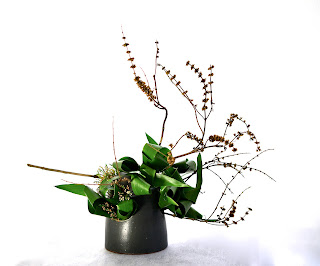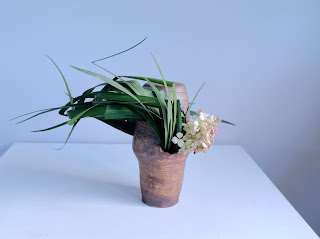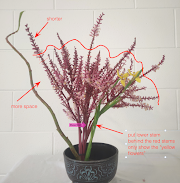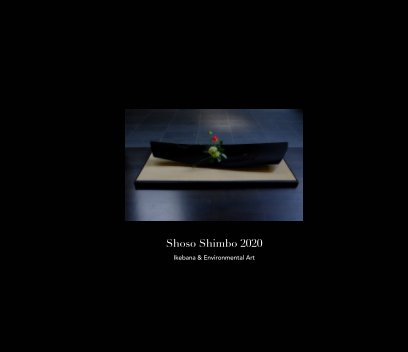Beyond Design Principles- Level 3.6 Form X Movement (16 November 2024)
Level 3.6. Form X Movement
Always remember that you are aiming to go beyond simply designing an ikebana work to create ikebana through meditation. Following the three-step learning model is recommended: start with a small aspect of design (Form X Movement in this session), think deeply about all aspects of design until new ideas emerge, and then follow the direction of your new ideas to find poetry in your work.
During this kind of creative meditation, it is hoped that you will be able to learn to “talk to the flowers” rather than thinking about designs analytically (Refer to Shoso's essay, A Flower Arrangement in Search of Poetry).
In this session, 3.6: Form X Movement, please start making one or more massed forms using leaves. It is recommended (but not necessary) to manipulate (cut, fold, twist, weave etc.) and transform the original shape of leaves.
Then, apply the principle of movement. The forms you created may have movement in themselves and you may develop your design from there. Alternatively, you may introduce line elements to add movement.
Remember that movement is the way the elements such as shape or colour are organised to lead the eye to the focal area (Zoom Ikebana Dojo, Level 2.6, Movement 2). We also learned that line elements in particular can be effective to express movement in ikebana (Zoom Ikebana Dojo, Level 1.6, Movement 1).
Applying the Fibonacci numbers to your design elements may help refine your design (Zoom Ikebana Dojo, Level 2.6 Movement, Session Notes - members only).
Process of Creative Meditation in Form X Movement
- Make one or more massed forms using leaves.
- Do your forms have movement in themselves?
- Think of their position in relation to your container. Think of many options.
- Where is your focal area?
- Can you feel movement or flow of energy from your focal area?
- Introduce other elements (line, form, space or colour) to emphasise movement. Review what you learned in Four Ikebana Elements in Zoom Ikebana Dojo.
- Check your work in terms of other design principles, i.e., movement, contrast and pattern. Review what you learned in Four Ikebana Principles in Zoom Ikebana Dojo. You may not be able to apply all of the principles but trying to incorporate some of them may help improve your work.
- Meditate on your work with your selfless mind, without thinking about designs. Make adjustments to reveal a new life (harmony or poetry) in the arrangement.
- In some Ikebana workshops, you may hear comments such as "you failed because you did not show contrast well." That is not our approach. We value design but we aim to go beyond design. In Level 3 our goal is to achieve harmony, which is higher than design in our definition.
What's Next? - Get Feedback
1. Book to join Zoom Ikebana Dojo by the deadline. That is the first step. Follow the instruction on the page.
2. After receiving confirmation of your booking, we send you links to access our video tutorial & our Zoom session. Our detailed video (members only) will help you analyse sample works, and help you make your Ikebana work.
3. Make your own work and send the image of your work to Zoom Ikebana Dojo (ikebana.dojo@gmail.com).
4. Join Zoom Ikebana Dojo. Enjoy friendly feedback from our facilitator and other participants.
5. Rework your ikebana after the Zoom session.
6. Post your work to Ikebana Gallery Award.
References
Shimbo, S. (2021). Ikebana: Flower Arrangement in Search of Poetry, Garland Magazine.























